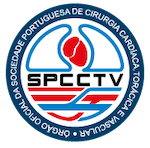NEOINTIMAL HYPERPLASIA
DOI:
https://doi.org/10.48729/pjctvs.106Abstract
Neointimal hyperplasia is a physiologic healing response to injury to the blood vessel wall, involving all the three arterial layers and it occurs in the presence of internal (endovascular) or external (surgical) injury. It is a highly complex process involving several tissues (perivascular, vessel wall, and blood) and numerous cell lineages with multiple molecular signaling networks. So, there is a number of possible targets for inhibition of this process. There are known risk factors for Intimal Hyperplasia, such as diabetes, female gender, presence of systemic inflammation, type of arteries treated, types of surgical and endovascular materials, presence of turbulent flow and genetic status. The present paper discusses the pathophysiology of neointimal hyperplasia and the strategies to prevention and treatment of it.
Downloads
References
Kijani S, Vazquez AM, Levin M, Boren J, Fogelstrand P. Intimal hyperplasia induced by vascular intervention causes lipoprotein retention and accelerated atherosclerosis. Physiol Rep. 2017;5(14).
Kleinstreuer C, Hyun S, Buchanan JR, Jr., Longest PW, Archie JP, Jr., Truskey GA. Hemodynamic Parameters and Early Intimal Thickening in Branching Blood Vessels. Crit Rev Biomed Eng. 2017;45(1-6):319-82.
Haruguchi H, Teraoka S. Intimal hyperplasia and hemodynamic factors in arterial bypass and arteriovenous grafts: a review. J Artif Organs. 2003;6(4):227-35.
Franzoni M, Cattaneo I, Longaretti L, Figliuzzi M, Ene-Iordache B, Remuzzi A. Endothelial cell activation by hemodynamic shear stress derived from arteriovenous fistula for hemodialysis access. Am J Physiol Heart Circ Physiol. 2016;310(1):H49-59.
Dake MD, Ansel GM, Jaff MR, Ohki T, Saxon RR, Smouse HB, et al. Durable Clinical Effectiveness With Paclitaxel-Eluting Stents in the Femoropopliteal Artery: 5-Year Results of the Zilver PTX Randomized Trial. Circulation. 2016;133(15):1472-83; discussion 83.
Muller-Hulsbeck S, Keirse K, Zeller T, Schroe H, Diaz-Cartelle J. Long-Term Results from the MAJESTIC Trial of the Eluvia Paclitaxel-Eluting Stent for Femoropopliteal Treatment: 3-Year Follow-up. Cardiovasc Intervent Radiol. 2017;40(12):1832-8.
Tepe G, Laird J, Schneider P, Brodmann M, Krishnan P, Micari A, et al. Drug-coated balloon versus standard percutaneous transluminal angioplasty for the treatment of superficial femoral and popliteal peripheral artery disease: 12-month results from the IN.PACT SFA randomized trial. Circulation. 2015;131(5):495-502.
Thieme M, Von Bilderling P, Paetzel C, Karnabatidis D, Perez Delgado J, Lichtenberg M, et al. The 24-Month Results of the Lutonix Global SFA Registry: Worldwide Experience With Lutonix Drug-Coated Balloon. JACC Cardiovasc Interv. 2017;10(16):1682-90.
Schroe H, Holden AH, Goueffic Y, Jansen SJ, Peeters P, Keirse K, et al. Stellarex drug-coated balloon for treatment of femoropopliteal arterial disease-The ILLUMENATE Global Study: 12-Month results from a prospective, multicenter, single-arm study. Catheter Cardiovasc Interv. 2018;91(3):497-504.
Katsanos K, Spiliopoulos S, Kitrou P, Krokidis M, Karnabatidis D. Risk of Death Following Application of Paclitaxel-Coated Balloons and Stents in the Femoropopliteal Artery of the Leg: A Systematic Review and Meta-Analysis of Randomized Controlled Trials. J Am Heart Assoc. 2018;7(24):e011245.
Zeller T, Baumgartner I, Scheinert D, Brodmann M, Bosiers M, Micari A, et al. Drug-eluting balloon versus standard balloon angioplasty for infrapopliteal arterial revascularization in critical limb ischemia:
-month results from the IN.PACT DEEP randomized trial. J Am Coll Cardiol. 2014;64(15):1568-76.
Aboyans V, Ricco JB, Bartelink MEL, Bjorck M, Brodmann M, Cohnert T, et al. Editor's Choice - 2017 ESC Guidelines on the Diagnosis and Treatment of Peripheral Arterial Diseases, in collaboration with the European Society for Vascular Surgery (ESVS). Eur J Vasc Endovasc Surg. 2018;55(3):305-68.
Razavi MK, Donohoe D, D'Agostino RB, Jr., Jaff MR, Adams G, Investigators D. Adventitial Drug Delivery of Dexamethasone to Improve Primary Patency in the Treatment of Superficial Femoral and Popliteal Artery Disease: 12-Month Results From the DANCE Clinical Trial. JACC Cardiovasc Interv. 2018;11(10):921-31.
Nishimoto Y, Fukuhara R, Miyamoto T, Toma M, Miyata A, Sato Y. Edge restenosis of a polytetrafluoroethylene-covered stent in the superficial femoral artery: insights from an imaging assessment with an electronic high-resolution angioscope. Cardiovasc Interv Ther. 2019.
Lin TC, Huang CY, Chen PL, Lee CY, Shih CC, Chen IM. Edge Stenosis After Covered Stenting for Long Superficial Femoral Artery Occlusive Disease: Risk Factor Analysis and Prevention With Drug-Coated Balloon Angioplasty. J Endovasc Ther. 2018;25(3):313-9.
Varcoe RL, Thomas SD, Lennox AF. Three-Year Results of the Absorb Everolimus-Eluting Bioresorbable Vascular Scaffold in Infrapopliteal Arteries. J Endovasc Ther. 2018;25(6):694-701.
Buglak NE, Jiang W, Bahnson ESM. Cinnamic aldehyde inhibits vascular smooth muscle cell proliferation and neointimal hyperplasia in Zucker Diabetic Fatty rats. Redox Biol. 2018;19:166-78.
Dugas TR, Brewer G, Longwell M, Fradella T, Braun J, Astete CE, et al. Nanoentrapped polyphenol coating for sustained drug release from a balloon catheter. J Biomed Mater Res B Appl Biomater. 2019;107(3):646-51.
Wang Y, Zhao D, Sheng J, Lu P. Local honokiol application inhibits intimal thickening in rabbits following carotid artery balloon injury. Mol Med Rep. 2018;17(1):1683-9.
Waksman R, Laird JR, Jurkovitz CT, Lansky AJ, Gerrits F, Kosinski AS, et al. Intravascular radiation therapy after balloon angioplasty of narrowed femoropopliteal arteries to prevent restenosis: results of the PARIS feasibility clinical trial. J Vasc Interv Radiol. 2001;12(8):915-21.
Wildgruber MG, Berger HJ. Cryoplasty for the prevention of arterial restenosis. Cardiovasc Intervent Radiol. 2008;31(6):1050-8.
McCaslin JE, Andras A, Stansby G. Cryoplasty for peripheral arterial disease. Cochrane Database Syst Rev. 2013(8):CD005507.
Wang B, Chen G, Urabe G, Xie R, Wang Y, Shi X, et al. A paradigm of endothelium-protective and stent-free anti-restenotic therapy using biomimetic nanoclusters. Biomaterials. 2018;178:293-301.






